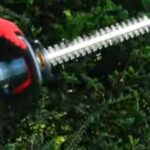As an Amazon Associate, this site earns commissions from qualifying purchases. For more information click here.
Keeping your chainsaw blades sharp is not only essential for efficient cutting but also critical for safety. Dull blades not only reduce cutting effectiveness but also increase the risk of kickback, which can be hazardous. While professional sharpening services are available, learning to sharpen chainsaw blades at home can save time and money, as well as empower you to maintain your equipment more effectively.
Key Takeaways:
- Regular sharpening enhances both cutting efficiency and safety by reducing the risk of kickback.
- Consistently maintaining proper angles and depth gauge settings ensures smooth cutting performance.
- With practice and attention to detail, anyone can achieve professional-quality sharpening results at home.
Step 1: Gather Your Tools and Safety Gear
Before diving into the sharpening process, it’s essential to gather all the necessary tools and safety gear. Here’s what you’ll need:
- Chainsaw file (matched to the size of your chainsaw blade)
- Depth gauge tool
- Flat file
- Vice or clamp to secure the chainsaw bar
- Gloves
- Safety goggles
- Workbench or sturdy surface
Ensure that you have a well-lit and adequately ventilated workspace, as sharpening chainsaw blades can generate metal filings and debris.
Step 2: Secure the Chainsaw Blade
Once you’ve gathered your tools and safety gear, it’s time to secure the chainsaw blade for sharpening. Place the chainsaw securely on a workbench or any sturdy surface, ensuring that it won’t move during the sharpening process.
Use a vice or clamp to secure the chainsaw bar firmly in place. This step is crucial for both safety and precision, as a stable setup ensures consistent sharpening results.
Step 3: Check the Chain Tension
Before proceeding with sharpening, it’s essential to check the tension of the chainsaw chain. A properly tensioned chain is crucial for achieving optimal sharpening results. If the chain is too loose, it may wobble during sharpening, leading to uneven results. Follow your chainsaw manufacturer’s guidelines for adjusting the chain tension if necessary.
Step 4: Identify the Dull Cutters
Next, carefully inspect the chainsaw chain to identify the dull cutters. Dull cutters will have rounded edges and show signs of wear. To make them easier to identify during sharpening, mark these cutters with a marker or chalk.
Step 5: Sharpen the Cutters
With the dull cutters identified, it’s time to start sharpening. Using the appropriate-sized chainsaw file, begin sharpening the cutters one by one. Position the file at the same angle as the cutter’s original bevel, which is typically around 30 degrees.
Apply light pressure and use smooth, steady strokes to file away the metal. Aim for a consistent number of strokes on each cutter to maintain uniformity.
When sharpening the cutters, it’s essential to maintain the original angle and shape of the cutting edge. Avoid applying too much pressure, as this can lead to uneven sharpening or even damage the cutter. Additionally, ensure that you file in one direction only, moving the file away from your body to prevent accidents.
Step 6: Check Depth Gauges
Once you’ve sharpened the cutters, it’s crucial to check and adjust the depth gauges or rakers. These small projections in front of each cutter control the depth of the cut and play a significant role in the chainsaw’s performance.
Use a depth gauge tool to ensure that the depth gauges are set to the correct height relative to the sharpened cutters. Proper depth gauge settings are essential for achieving smooth and efficient cutting performance.
Step 7: File the Depth Gauges
If the depth gauges are too high after inspection, use a flat file to carefully lower them to the correct height. Filing the depth gauges ensures that they’re properly aligned with the sharpened cutters, allowing for smooth and efficient cutting action.
Be cautious not to file them too low, as this can lead to an overly aggressive cutting action, increasing the risk of kickback.
Step 8: Rotate the Chainsaw
Once you’ve sharpened and adjusted the cutters on one side of the chainsaw chain, it’s time to rotate the chainsaw to access the cutters on the other side. Release the vice or clamp, rotate the chainsaw bar carefully, and secure it again to the workbench.
Repeat the sharpening process for the remaining cutters, ensuring that each one receives equal attention.
Step 9: Clean and Lubricate the Chain
After sharpening is complete, it’s essential to remove any metal filings and debris from the chainsaw chain. Use a brush or compressed air to clean the chain thoroughly, ensuring that no residues are left behind. Lubricate the chain with chainsaw bar oil to reduce friction and prevent premature wear. Proper lubrication is essential for maintaining the chain’s performance and prolonging its lifespan.
Step 10: Test the Chainsaw
Before putting the chainsaw back into operation, it’s crucial to conduct a test cut to ensure that the blades are sharpened to your satisfaction. Choose a suitable test material, such as a piece of wood or a log, and make a few test cuts to assess the cutting performance.
Pay attention to the smoothness and efficiency of the cuts, as well as any signs of dullness or unevenness. If the chainsaw is noisy, there are ways to minimize it.
If necessary, make any final adjustments to the sharpened cutters or depth gauges to achieve the desired cutting performance. Remember that sharpening chainsaw blades is a skill that improves with practice, so don’t be discouraged if your first attempts aren’t perfect.
With time and experience, you’ll become more proficient at sharpening chainsaw blades and maintaining your equipment effectively.
What is the Best Way to Sharpen a Chainsaw?
Keeping chainsaw blades sharp is crucial for optimal cutting performance and safety. While professional sharpening services are available, learning to sharpen chainsaws at home can save time and money. In this article, we’ll explore different methods that you can use to sharpen chainsaws effectively in the comfort of your own home.
Manual Chainsaw File
Using a manual chainsaw file is one of the most traditional and straightforward methods for sharpening chainsaw blades at home. This method requires a chainsaw file matched to the size of your chainsaw blade, along with a vice or clamp to secure the chainsaw bar.
With the chainsaw blade securely clamped in place, simply use the chainsaw file to sharpen each cutter individually, maintaining the original bevel angle. This method offers precision and control, making it suitable for both beginners and experienced users.
Electric Chainsaw Sharpener
An electric chainsaw sharpener is a convenient option for those who prefer a faster and more automated sharpening process. These sharpeners come in various designs, including bench-mounted and handheld models.
With an electric chainsaw sharpener, you can quickly and accurately sharpen chainsaw blades by guiding them against a rotating grinding wheel or sharpening stone. While electric sharpeners offer efficiency, they may require some practice to achieve consistent results and proper sharpening angles.
Chainsaw Sharpening Kits
Chainsaw sharpening kits are comprehensive sets that typically include various tools and accessories needed for sharpening chainsaws at home. These kits often contain files, guides, depth gauge tools, and other essentials for maintaining chainsaw blades.
Using a chainsaw sharpening kit can simplify the sharpening process by providing all the necessary tools in one package. Additionally, many kits come with instructional guides or videos to help users sharpen their chainsaws with confidence.
Dremel Rotary Tool
For precise sharpening of chainsaw blades and intricate detailing, a Dremel rotary tool can be a useful option. Equipped with a chainsaw sharpening attachment or a compatible grinding stone, a Dremel rotary tool allows you to sharpen individual cutters with precision and control.
This method is ideal for touch-up sharpening or addressing specific areas of the chainsaw blade that require attention. However, using a Dremel rotary tool requires patience and a steady hand to avoid over-sharpening or damaging the blade.
Sharpening chainsaws at home offers convenience and cost savings while ensuring optimal cutting performance and safety. Whether you prefer a manual approach with a chainsaw file or the precision of a Dremel rotary tool, there are various methods available to suit your preferences and skill level. With practice and attention to detail, anyone can master the art of sharpening chainsaws at home, prolonging the lifespan of their equipment and enhancing overall efficiency.
Chainsaw Sharpening Safety Guide
Sharpening chainsaws is a necessary maintenance task to ensure optimal cutting performance and safety. However, it’s crucial to prioritize safety when undertaking this activity. In this article, we’ll discuss essential guidelines to follow to ensure safety when sharpening chainsaws.
- Wear Proper Personal Protective Equipment (PPE):
- Before sharpening chainsaw blades, ensure you’re wearing the appropriate personal protective equipment (PPE). This includes:
- Safety goggles or a face shield to protect your eyes from flying debris.
- Gloves to shield your hands from sharp edges and metal filings.
- Ear protection to reduce noise exposure from the chainsaw and other equipment.
- Secure the Chainsaw Properly:
- When sharpening chainsaw blades, always secure the chainsaw properly to prevent accidents. Use a vice or clamp to secure the chainsaw bar firmly to a stable workbench or surface. This ensures stability and prevents the chainsaw from moving during sharpening.
Disconnect the Chainsaw
Before sharpening, ensure the chainsaw is turned off and disconnected from any power source. This prevents accidental activation of the chainsaw, reducing the risk of injury.
Follow Proper Sharpening Techniques
Adhere to proper sharpening techniques to ensure safety and optimal results. Use the appropriate-sized chainsaw file matched to your chainsaw blade, and maintain the original bevel angle of the cutters. Apply light pressure and use smooth, steady strokes when filing to avoid accidents.
Handle Files and Tools with Care
Exercise caution when handling chainsaw files and other sharpening tools. Avoid touching the sharp edges of files and blades with bare hands to prevent cuts and injuries. Always store files and tools in a safe place when not in use to avoid accidents.
Maintain Focus
Sharpening chainsaw blades requires concentration and focus. Avoid distractions and maintain awareness of your surroundings while sharpening. Keep pets, children, and other distractions away from your work area to minimize the risk of accidents.
Take Breaks as Needed
If you feel fatigued or distracted while sharpening chainsaw blades, take breaks as needed. Fatigue can lead to lapses in concentration and increase the risk of accidents. Step away from your work area, rest, and return refreshed to continue sharpening safely.
Clean Up Thoroughly
After sharpening chainsaw blades, clean up your work area thoroughly to remove metal filings, debris, and other hazards. Dispose of waste materials properly and store tools in their designated places to prevent accidents and maintain a safe working environment.
- Safety should always be a top priority when sharpening chainsaws. By following these essential guidelines and exercising caution throughout the sharpening process, you can ensure a safe and injury-free experience.
- Remember to wear proper PPE, secure the chainsaw, follow proper sharpening techniques, handle tools with care, maintain focus, take breaks as needed, and clean up thoroughly. With a safety-conscious approach, you can sharpen chainsaw blades effectively while minimizing the risk of accidents and injuries.
Conclusion
Regularly sharpening your chainsaw blades is essential for maintaining peak performance and ensuring safe operation. By following this comprehensive step-by-step guide, you can sharpen your chainsaw blades at home with confidence.
Remember to prioritize safety throughout the process by wearing appropriate protective gear and handling tools with care. With practice and attention to detail, you’ll be able to achieve professional-quality sharpening results and prolong the lifespan of your chainsaw equipment.

I love the outdoors and all the tools for maintaining gardens, yards and lawns. The only thing I am more passionate about is sharing what I know about garden and outdoor equipment.


